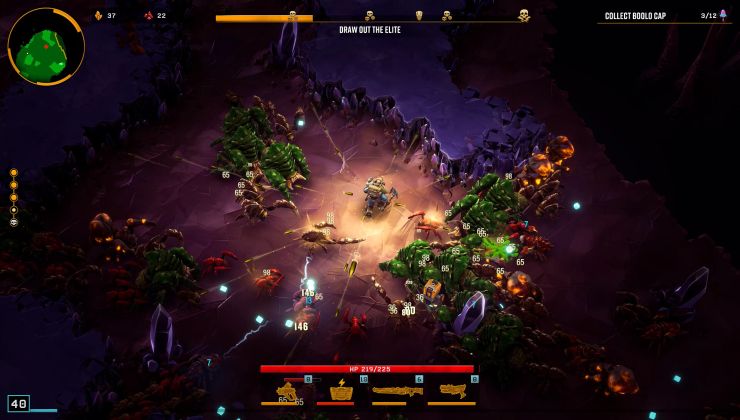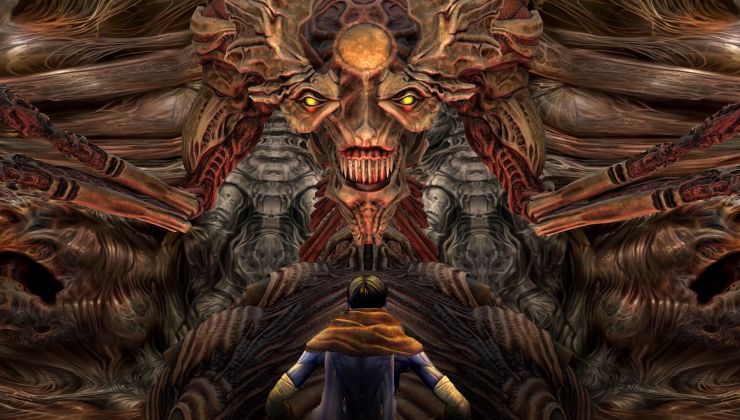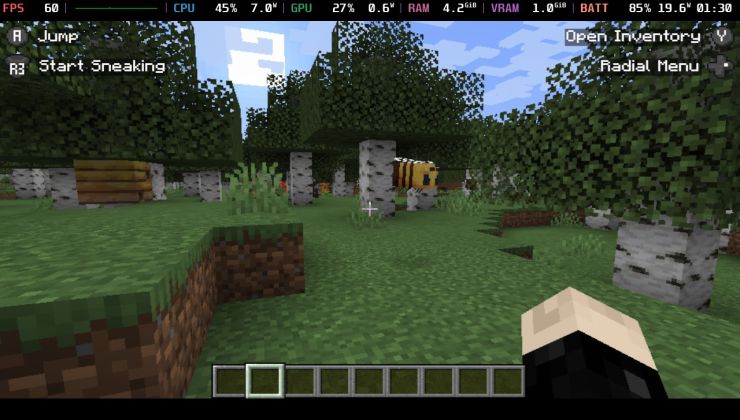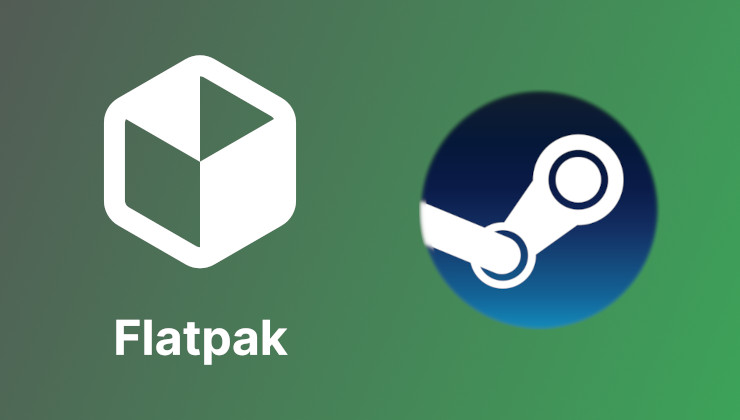GNOME has received recognition as a Public Interest Infrastructure, and so they've been awarded €1M from the Sovereign Tech Fund.
"GNOME has played a major role in the Free Software, Open Source, and Linux desktop ecosystem for more than 25 years. The GNOME community is dedicated, diverse, and dynamic. The GNOME desktop and apps are used by millions of people and its technologies are deployed on countless devices and products.
We are excited to see the GNOME project recognized as critical digital infrastructure and are grateful to Sovereign Tech Fund for supporting our initiatives for GNOME and the wider Linux desktop." — GNOME Foundation
The GNOME Foundation say this money will go towards these projects:
- Improve the current state of accessibility.
- Design and prototype a new accessibility stack.
- Encrypt user home directories individually.
- Modernize secrets storage.
- Increase the range and quality of hardware support.
- Invest in Quality Assurance and Developer Experience.
- Expand and broaden freedesktop APIs.
- Consolidate and improve platform components.
See the announcement here.
Some you may have missed, popular articles from the last month:
All posts need to follow our rules. For users logged in: please hit the Report Flag icon on any post that breaks the rules or contains illegal / harmful content. Guest readers can email us for any issues.
0 Likes
I don't see "Improve the state of VRR."
0 Likes
I don't see "Improve the state of VRR."
Is this helpful?
$ gsettings set org.gnome.mutter experimental-features "['variable-refresh-rate']"
https://gitlab.gnome.org/GNOME/mutter/-/merge_requests/1154
1 Likes, Who?
Is that . . . a fountain pen nib?I didn't know that the Sovereign had a tech fund...
No! This has to be the Reapers' Indoctrination Fund!!!
!Sovereign
0 Likes
Is that . . . a fountain pen nib?I didn't know that the Sovereign had a tech fund...
No! This has to be the Reapers' Indoctrination Fund!!!
!Sovereign
I mean, he says something along the lines of "our numbers will blot out the sky" at one point -- so maybe he was talking about ink blots after all.
1 Likes, Who?
Considering the large number of sudden deaths this year, I wonder if some FOSS people would be interested in codifying certain FOSS projects as recipients in the event of their death.
I could easily think of a dozen FOSS projects that would be worthy recipients in my opinion.
Even what 1M could do for GIMP if they can get the foundation squared up.
I could easily think of a dozen FOSS projects that would be worthy recipients in my opinion.
Even what 1M could do for GIMP if they can get the foundation squared up.
1 Likes, Who?
I don't see "Improve the state of VRR."
Very few people care about VRR, which is also why it have taken so long to get it implemented.
Last edited by Liam Dawe on 13 Nov 2023 at 11:08 am UTC
5 Likes, Who?
Very few people care about VRR, which is also why it have taken so long to get it implemented.
I find it very hard to believe that. Without VRR, you get either flickering or might be losing quite a bit of the performance you payed for (plus added input lag, but that probably is something not many people care for). When thinking about it, the monitor displaying the image when it's ready instead of some hundreds of bucks of CPU plus possibly many hundreds of bucks of GPU waiting for the monitor is the world as it's supposed to be.
1 Likes, Who?
Comments have been cleaned up. Won't be discussing why but I'll be clear on this again: we really don't appreciate stupid far-right conspiracy crap on who is behind funding. Please don't go there and any other comments on it will be removed which includes referencing my comment here. Please continue on as normal, happy Monday! :)
5 Likes, Who?
I don't see "Improve the state of VRR."
Very few people care about VRR, which is also why it have taken so long to get it implemented.
I would guess that for the millions of Linux Steam users VRR is somewhat important. I just thought that after getting some extra funding they would put some of it towards that 3 year old merge request.
2 Likes, Who?
I don't see "Improve the state of VRR."
Very few people care about VRR, which is also why it have taken so long to get it implemented.
I would guess that for the millions of Linux Steam users VRR is somewhat important. I just thought that after getting some extra funding they would put some of it towards that 3 year old merge request.
It's only important to gamers which already is a small subset of all Linux users and on top of that it is also only important to people that have a system that cannot handle high enough frame rates, if you e.g have 1% lows > 90fps then you will not see screen tearing so VRR will be mostly useless then.
Very few people care about VRR, which is also why it have taken so long to get it implemented.
I find it very hard to believe that. Without VRR, you get either flickering or might be losing quite a bit of the performance you payed for (plus added input lag, but that probably is something not many people care for). When thinking about it, the monitor displaying the image when it's ready instead of some hundreds of bucks of CPU plus possibly many hundreds of bucks of GPU waiting for the monitor is the world as it's supposed to be.
Important for games yes but how small a subset of users are gamers. Flickering is not the opposite of VRR, it's screen tearing and honestly since I moved away from a 60Hz screen and my old GPU I cannot notice screen tearing (the fps is far to high for that).
Last edited by F.Ultra on 13 Nov 2023 at 1:02 pm UTC
1 Likes, Who?
I don't see "Improve the state of VRR."
Very few people care about VRR, which is also why it have taken so long to get it implemented.
I would guess that for the millions of Linux Steam users VRR is somewhat important. I just thought that after getting some extra funding they would put some of it towards that 3 year old merge request.
It's only important to gamers which already is a small subset of all Linux users and on top of that it is also only important to people that have a system that cannot handle high enough frame rates, if you e.g have 1% lows > 90fps then you will not see screen tearing so VRR will be mostly useless then.
Yes it's very important to gamers. I would go as far as to call it a game changer for PC gaming. The fact that Gnome is not prioritizing it is very sad. But I understand gamers are not the target audience for IBM/Red Hat. Still I was hoping to see some progress with this donation.
Last edited by Brokatt on 13 Nov 2023 at 2:56 pm UTC
1 Likes, Who?
I would guess that for the millions of Linux Steam users VRR is somewhat important.More than 40% use a Steam Deck. Steam Deck doesn't support VRR (even the newest revision won't). It can't be that important if a gaming company omits it (on a device which would very much benefit from it).
0 Likes
Flickering is not the opposite of VRR, it's screen tearing
Yes, I was using the wrong term here.
and honestly since I moved away from a 60Hz screen and my old GPU I cannot notice screen tearing (the fps is far to high for that).
That's great for you, but many people are having low fps, and if not currently, maybe tomorrow with the next generation of games, you might have to. Your card will stop being high tier - but still have VRR.
(And, as I think you're a technical person as well: CPU and GPU waiting for the monitor is just wrong.)
I would guess that for the millions of Linux Steam users VRR is somewhat important.More than 40% use a Steam Deck. Steam Deck doesn't support VRR (even the newest revision won't). It can't be that important if a gaming company omits it (on a device which would very much benefit from it).
Well, I sure don't buy into "The company isn't giving to us, so it's not important." Anybody got some more insight why Valve wouldn't do it? I'd guess it's part of making Steam Deck as affordable as possible?
0 Likes
Flickering is not the opposite of VRR, it's screen tearing
Yes, I was using the wrong term here.
and honestly since I moved away from a 60Hz screen and my old GPU I cannot notice screen tearing (the fps is far to high for that).
That's great for you, but many people are having low fps, and if not currently, maybe tomorrow with the next generation of games, you might have to. Your card will stop being high tier - but still have VRR.
(And, as I think you're a technical person as well: CPU and GPU waiting for the monitor is just wrong.)
I would guess that for the millions of Linux Steam users VRR is somewhat important.More than 40% use a Steam Deck. Steam Deck doesn't support VRR (even the newest revision won't). It can't be that important if a gaming company omits it (on a device which would very much benefit from it).
Well, I sure don't buy into "The company isn't giving to us, so it's not important." Anybody got some more insight why Valve wouldn't do it? I'd guess it's part of making Steam Deck as affordable as possible?
Full agreement on all parts, I was just commenting on why the devs are not running their legs off in order to implement VRR. And funding like this is obviously aimed at improving the desktop experience and not the gaming experience (too many people are still not seeing gaming as something that is important).
Regarding the CPU+GPU waiting for Vsync I think I wrote before that I'm still perplexed that we in a world where monitors no longer really update with a frequency (like a CRT have to do) the GPU<->Monitor protocol should really just be start-of-image+image+end-of-image and no frequences be used at all, only that the monitor would reply back what the minimum wait period would be between images. VRR as such should both not exist and be the default so to speak.
I don't see "Improve the state of VRR."
Very few people care about VRR, which is also why it have taken so long to get it implemented.
I would guess that for the millions of Linux Steam users VRR is somewhat important. I just thought that after getting some extra funding they would put some of it towards that 3 year old merge request.
It's only important to gamers which already is a small subset of all Linux users and on top of that it is also only important to people that have a system that cannot handle high enough frame rates, if you e.g have 1% lows > 90fps then you will not see screen tearing so VRR will be mostly useless then.
Yes it's very important to gamers. I would go as far as to call it a game changer for PC gaming. The fact that Gnome is not prioritizing it is very sad. But I understand gamers are not the target audience for IBM/Red Hat. Still I was hoping to see some progress with this donation.
Both VRR and HDR is something that we gamers are anxiously awaiting but the unfortunate truth is that desktop is where the focus is, especially for funding like this.
Last edited by F.Ultra on 13 Nov 2023 at 5:40 pm UTC
1 Likes, Who?
I didn't know that the Sovereign had a tech fund...
!Go Team Venture!
Confidence born of ignorance. The cycle cannot be broken.
1 Likes, Who?
Flickering is not the opposite of VRR, it's screen tearing
Yes, I was using the wrong term here.
and honestly since I moved away from a 60Hz screen and my old GPU I cannot notice screen tearing (the fps is far to high for that).
That's great for you, but many people are having low fps, and if not currently, maybe tomorrow with the next generation of games, you might have to. Your card will stop being high tier - but still have VRR.
(And, as I think you're a technical person as well: CPU and GPU waiting for the monitor is just wrong.)
I would guess that for the millions of Linux Steam users VRR is somewhat important.More than 40% use a Steam Deck. Steam Deck doesn't support VRR (even the newest revision won't). It can't be that important if a gaming company omits it (on a device which would very much benefit from it).
Well, I sure don't buy into "The company isn't giving to us, so it's not important." Anybody got some more insight why Valve wouldn't do it? I'd guess it's part of making Steam Deck as affordable as possible?
Full agreement on all parts, I was just commenting on why the devs are not running their legs off in order to implement VRR. And funding like this is obviously aimed at improving the desktop experience and not the gaming experience (too many people are still not seeing gaming as something that is important).
Regarding the CPU+GPU waiting for Vsync I think I wrote before that I'm still perplexed that we in a world where monitors no longer really update with a frequency (like a CRT have to do) the GPU<->Monitor protocol should really just be start-of-image+image+end-of-image and no frequences be used at all, only that the monitor would reply back what the minimum wait period would be between images. VRR as such should both not exist and be the default so to speak.
I don't see "Improve the state of VRR."
Very few people care about VRR, which is also why it have taken so long to get it implemented.
I would guess that for the millions of Linux Steam users VRR is somewhat important. I just thought that after getting some extra funding they would put some of it towards that 3 year old merge request.
It's only important to gamers which already is a small subset of all Linux users and on top of that it is also only important to people that have a system that cannot handle high enough frame rates, if you e.g have 1% lows > 90fps then you will not see screen tearing so VRR will be mostly useless then.
Yes it's very important to gamers. I would go as far as to call it a game changer for PC gaming. The fact that Gnome is not prioritizing it is very sad. But I understand gamers are not the target audience for IBM/Red Hat. Still I was hoping to see some progress with this donation.
Both VRR and HDR is something that we gamers are anxiously awaiting but the unfortunate truth is that desktop is where the focus is, especially for funding like this.
At least Steam OS supports both VRR and HDR through Gamescope. KDE Plasma 6 also has initial support for both. So things are moving and I'm very happy with that :)
Flickering is not the opposite of VRR, it's screen tearing
Yes, I was using the wrong term here.
and honestly since I moved away from a 60Hz screen and my old GPU I cannot notice screen tearing (the fps is far to high for that).
That's great for you, but many people are having low fps, and if not currently, maybe tomorrow with the next generation of games, you might have to. Your card will stop being high tier - but still have VRR.
(And, as I think you're a technical person as well: CPU and GPU waiting for the monitor is just wrong.)
I would guess that for the millions of Linux Steam users VRR is somewhat important.More than 40% use a Steam Deck. Steam Deck doesn't support VRR (even the newest revision won't). It can't be that important if a gaming company omits it (on a device which would very much benefit from it).
Well, I sure don't buy into "The company isn't giving to us, so it's not important." Anybody got some more insight why Valve wouldn't do it? I'd guess it's part of making Steam Deck as affordable as possible?
Most likely it's a cost issue. The new OLED display looks to be the same as in the Switch OLED. Which means big volumes and better prices but it also means no VRR. Just because Valve want to release price competitive hardware without support VRR doesn't mean the software shouldn't offer support. Which it does as Steam OS have support for VRR on external displays.
Last edited by Brokatt on 14 Nov 2023 at 8:59 am UTC
2 Likes, Who?
A bit late to the party but I was wondering to whose sovereignity the Sovereign Tech Fund was refering. Turn up it is a fund setup by some German administrations, the Bundesministerium für Wirtschaft und Klimaschutz and the Bundesagentur für Sprunginnovationen.
So I guess we need to thank Germany for this one. I'm a bit disappointed that it is not a EU initiative, the EU needs strong common policy in favor of opensource.
So I guess we need to thank Germany for this one. I'm a bit disappointed that it is not a EU initiative, the EU needs strong common policy in favor of opensource.
1 Likes, Who?
A bit late to the party but I was wondering to whose sovereignity the Sovereign Tech Fund was refering. Turn up it is a fund setup by some German administrations, the Bundesministerium für Wirtschaft und Klimaschutz and the Bundesagentur für Sprunginnovationen.
So I guess we need to thank Germany for this one.
You're welcome. ;)
I'm sure it refers to sovereignty from the big (US) IT players. You know their names...
For the question of whose sovereignty, the website mentions "Europe and Germany".
(You need to "swipe" a bit here .)
0 Likes











 An idiots guide to setting up Minecraft on Steam Deck / SteamOS with controller support
An idiots guide to setting up Minecraft on Steam Deck / SteamOS with controller support How to install extra software, apps and games on SteamOS and Steam Deck
How to install extra software, apps and games on SteamOS and Steam Deck
See more from me